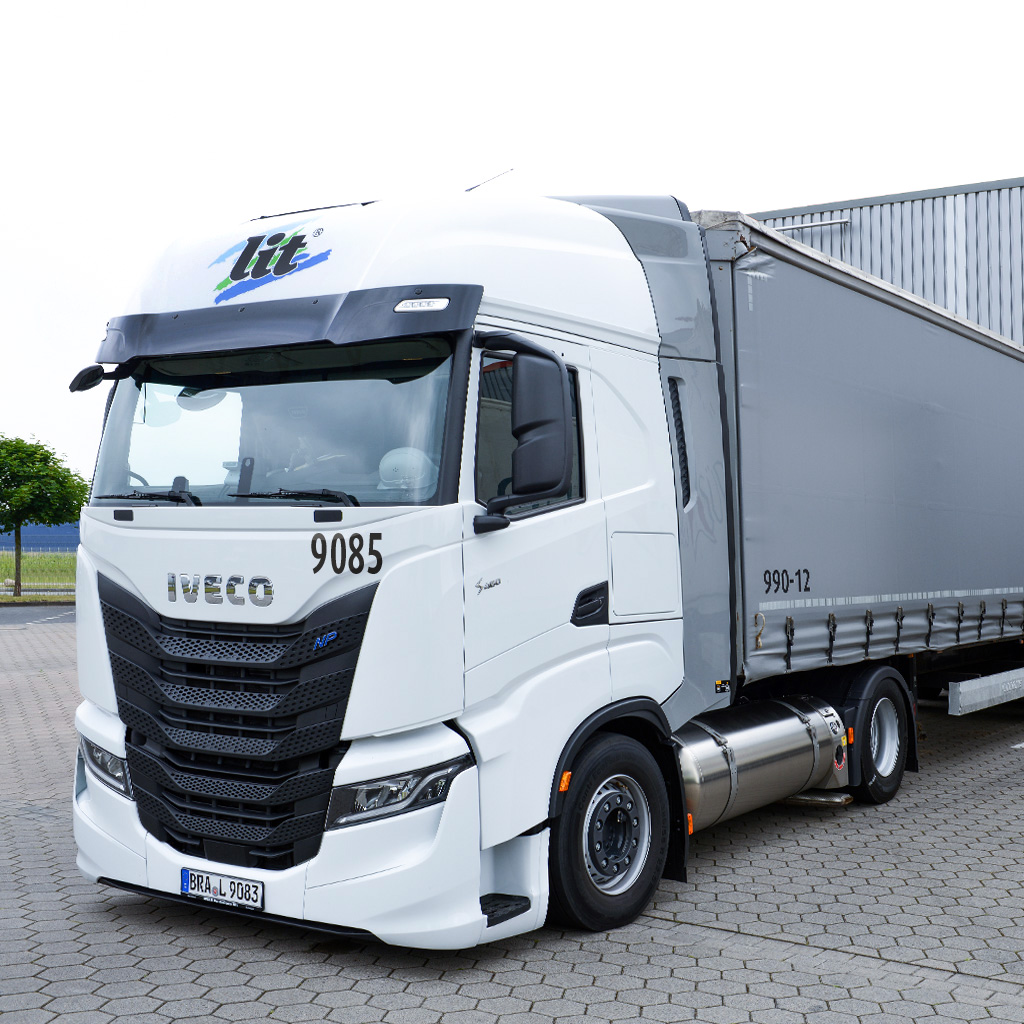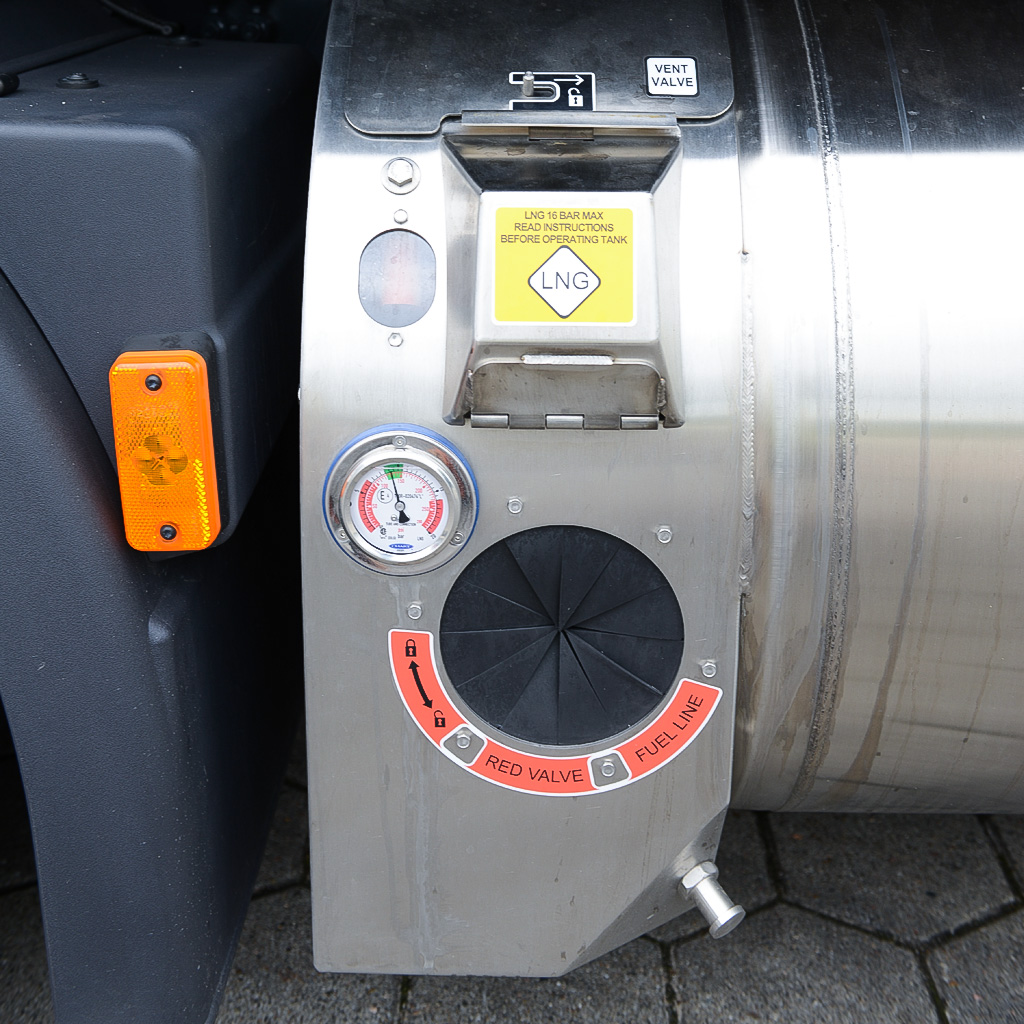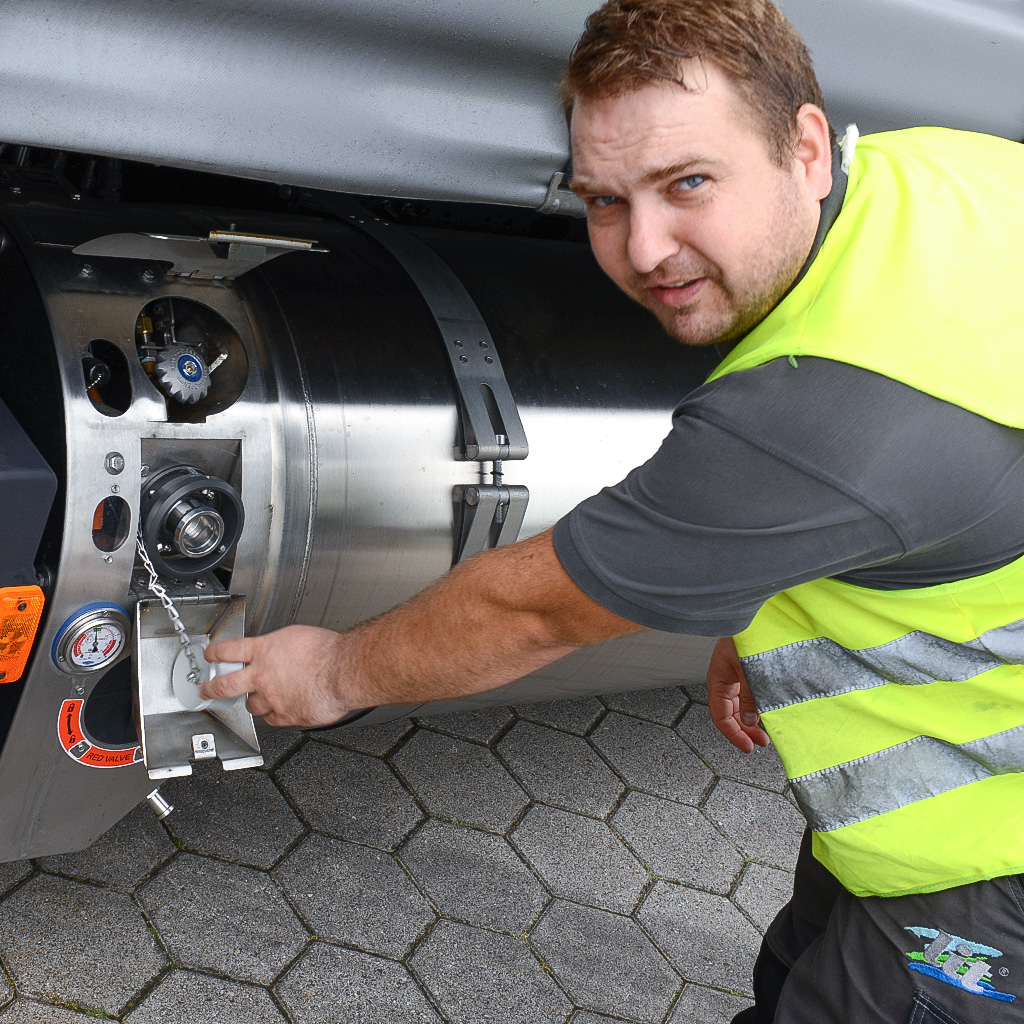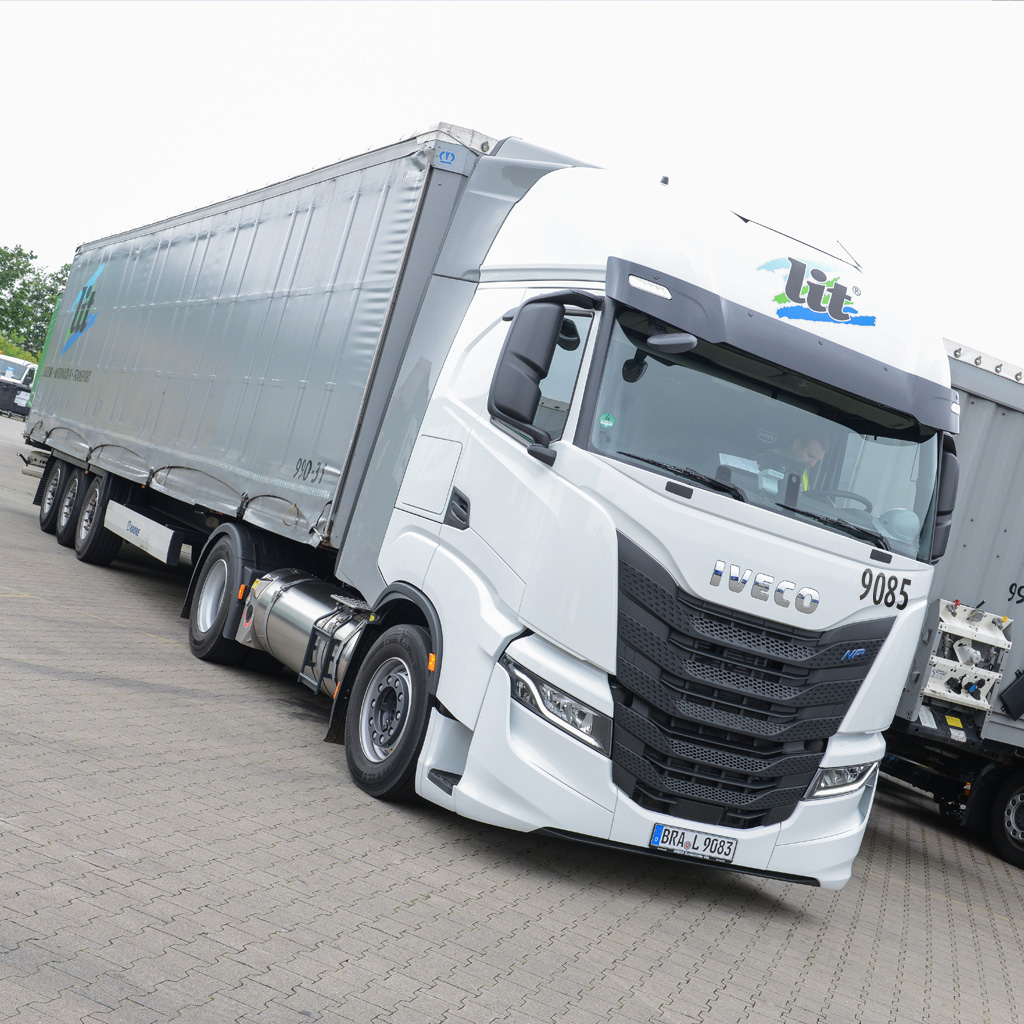
GREEN LOGISTICS
L.I.T. RELIES ON ALTERNATIVE DRIVES
The newly purchased LNG lorries not only emit less particulate matter into the air, they also reduce noise by around half and consume less fuel.

The newly purchased LNG lorries not only emit less particulate matter into the air, they also reduce noise by around half and consume less fuel.
Robert Hennemann, Head of Driving Personnel Management, and Ingo Schreiber, Member of the Board of L.I.T. AG, are happy to pay a visit to the orchard.

We use our Iveco LNG lorries to transport parts for our customers in the automotive industry, among others. For example, three of them are travelling on the line between Leipzig and Laichingen. The CNG vehicle is used in beverage logistics and operates in local transport in Bremen. After initial problems with the software, our drivers are now completely delighted with the new lorries. “With the current use of LNG vehicles, we have taken the first steps towards clean transport,” says Claas Bunjes, Head of Mobility & Digital Solutions.



LNG vehicles score points above all with their environmental benefits. CO2 emissions, for example, are between ten and 15 per cent lower than with fossil fuels. Even more impressive is that 95 per cent less particulate matter is released into the air. Noise is also reduced by around half and the fuel consumption of LNG vehicles is lower. Despite high acquisition costs, they will amortise after a short time.
Die größte Herausforderung beim Einsatz LNG-betriebender Fahrzeuge war lange Zeit die schlechte Infrastruktur. The filling station network has now been significantly expanded and drivers can obtain LNG and CNG for their lorries at around 30 filling stations – according to the German Energy Agency, the local infrastructure is to be expanded to around 50 filling stations by the end of 2020. The aim is to install at least 200 LNG refuelling stations by 2025.
We can therefore already use the vehicles on significantly more routes than shortly after their purchase. After a detailed briefing, during which some special features are explained, the refuelling process is no more complicated than with other fuels. For example, drivers must note that a distinction is made between warm (-130 to -120° C) and cold LNG (approx. -150° C). Our trucks prefer warm LNG. As soon as the liquefied natural gas is too cold, the pressure in the tank is reduced. The vehicles must then remain stationary until the pressure has equalised. For this reason, only appropriately instructed drivers who also wear protective equipment when refuelling may be used on the vehicles.
© 2025 L.I.T. AG · Otto-Hahn-Straße 18 · 26919 Brake Data protection | Imprint | Gender regulation | Manage consent | Complaint form | AGB
© 2025 L.I.T. AG · Otto-Hahn-Straße 18 · 26919 Brake
Data protection | Imprint | Gender regulation | Manage consent | Complaint form | AGB
© 2025 L.I.T. AG
Otto-Hahn-Straße 18 · 26919 Brake
Data protection | Imprint
Gender regulation | Manage consent
Complaint form | AGB